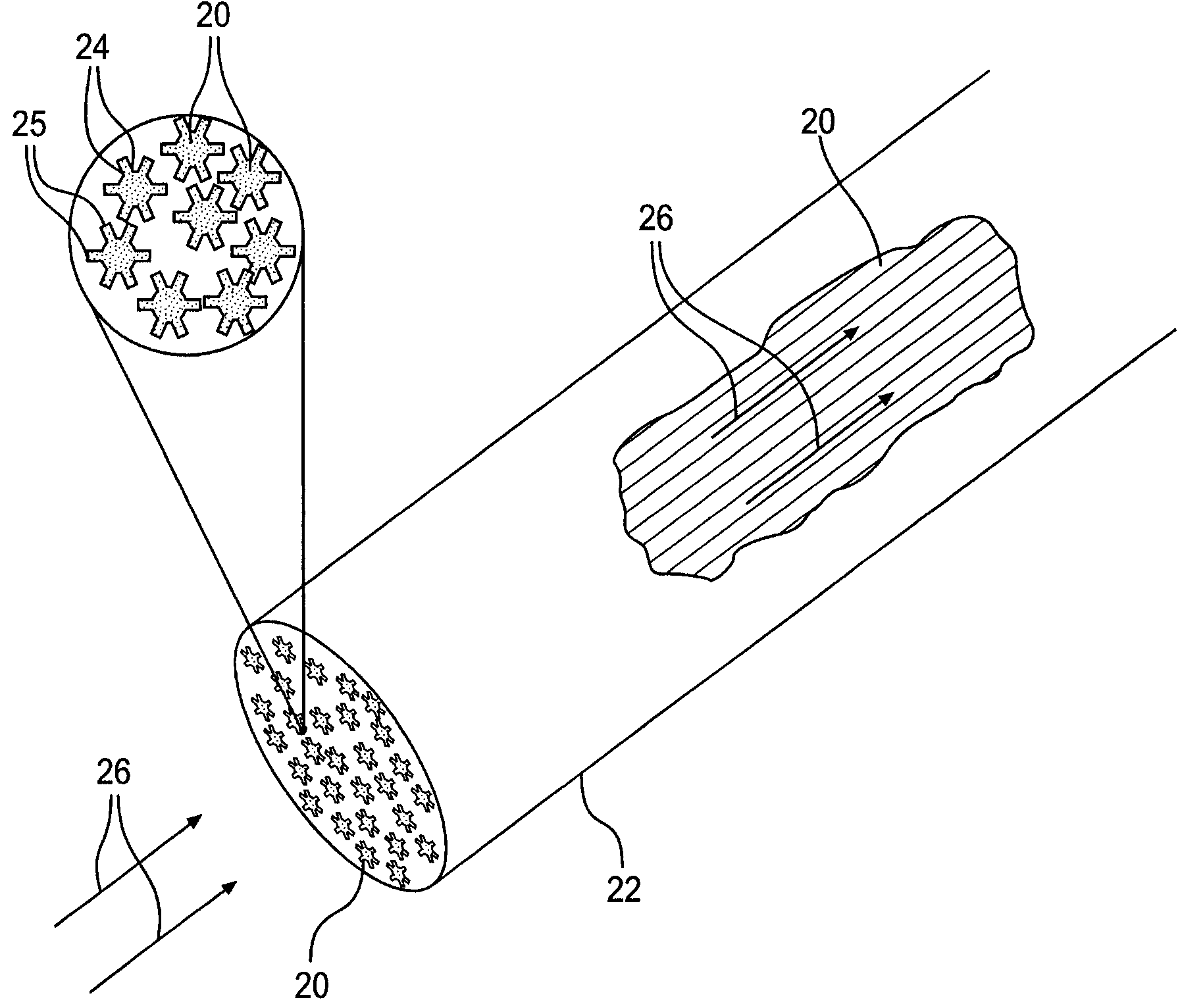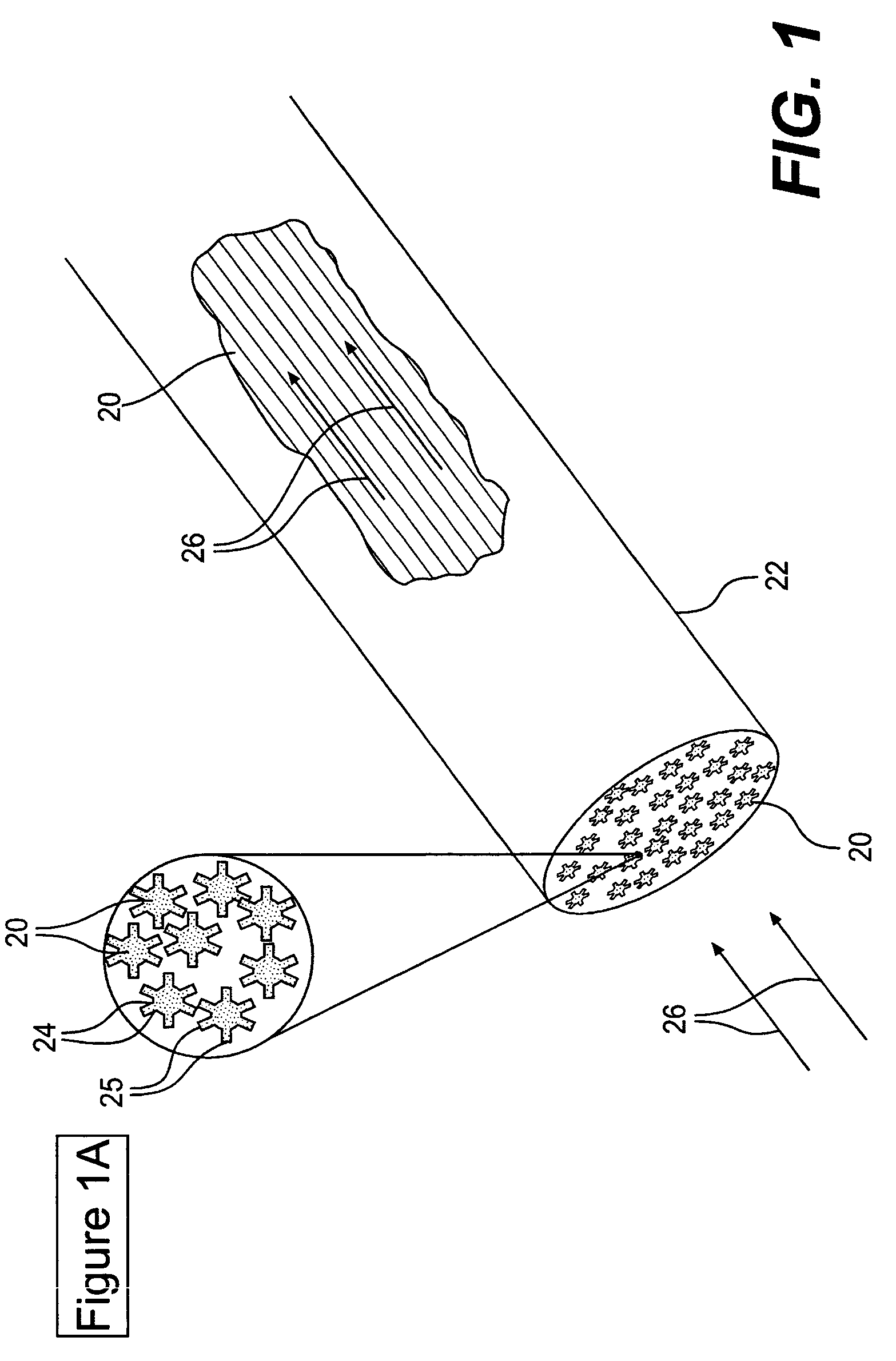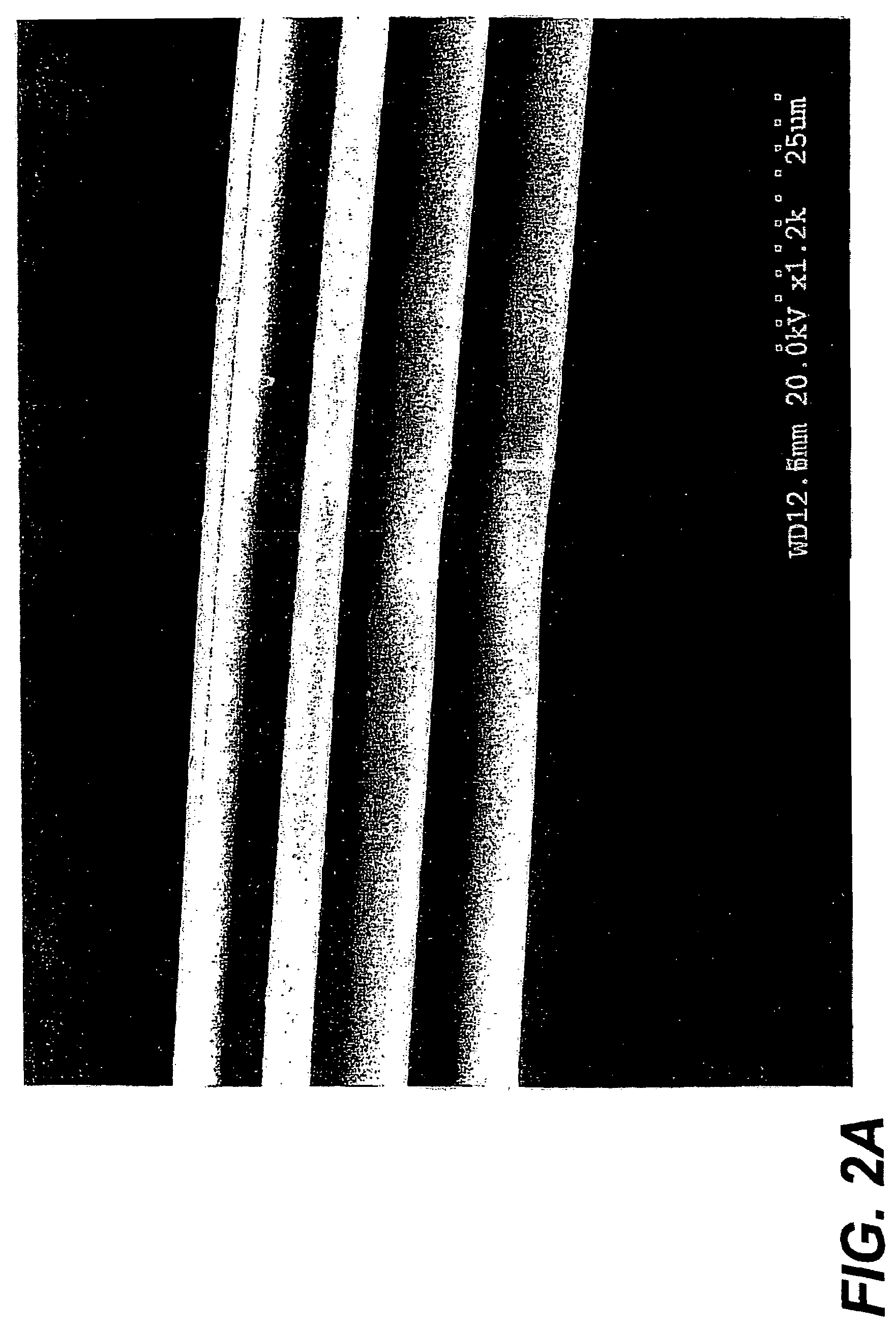Monolithic structures comprising polymeric fibers for chemical separation by liquid chromatography
a monolithic structure and polymeric fiber technology, applied in the direction of separation process, filtration separation, instruments, etc., can solve the problems of high backpressure and restrictive set of stationary phase chemistries, high capital costs associated with producing large volume columns, and high demands on system hydraulics (i.e. pumps)
- Summary
- Abstract
- Description
- Claims
- Application Information
AI Technical Summary
Benefits of technology
Problems solved by technology
Method used
Image
Examples
example 1
[0080]Channeled propylene fibers having nominal diameters of approximately 50 μm and 8 branched channels running along their length were examined for protein separations. The channeled fibers were obtained from Eastman Chemical, Kingsport, Tenn. from a bobbin of fibers measuring more than 1000 meters in length.
[0081]Bundles of approximately 1200 fibers were loaded co-linearly into 4.6 mm i.d., 306 mm long stainless steel tubing (available from Valco Instruments, Houston, Tex.). Bundles were passed through the column such that the general alignment of the fibers within the column was longitudinally parallel such that broadening due to eddy diffusion, i.e., tortuous paths, was expected to be minimal.
[0082]The fiber lengths were trimmed to be flush with the tubing ends, and the column ends were sealed with 0.75 mm thick, 6.35 mm diameter frits including 10 μm pores and completed with column end fittings (available from Valco Instruments). Each fiber column had a packing mass of about 1...
example 2
[0088]A monolithic cartridge of heat-bonded polyester fibers having substantially circular cross-sections was utilized to selectively separate solutions including the proteins ribonuclease A and cytochrome C. The solvent gradient was varied from 80:20 (water (0.1% TFA):acetonitrile(0.06% TFA)) to 70:30 over 10 minutes at a liquid volume flow rate of 1.75 mL / min. Systems and methods used for the separations were similar to those described in Example 1, above. Three separations of 20 μL injections were performed. Results of the separations are graphically illustrated in FIG. 12. As can be seen, the three injections yielded very reproducible separations.
PUM
| Property | Measurement | Unit |
|---|---|---|
| diameters | aaaaa | aaaaa |
| diameter | aaaaa | aaaaa |
| length | aaaaa | aaaaa |
Abstract
Description
Claims
Application Information
 Login to View More
Login to View More - R&D
- Intellectual Property
- Life Sciences
- Materials
- Tech Scout
- Unparalleled Data Quality
- Higher Quality Content
- 60% Fewer Hallucinations
Browse by: Latest US Patents, China's latest patents, Technical Efficacy Thesaurus, Application Domain, Technology Topic, Popular Technical Reports.
© 2025 PatSnap. All rights reserved.Legal|Privacy policy|Modern Slavery Act Transparency Statement|Sitemap|About US| Contact US: help@patsnap.com



